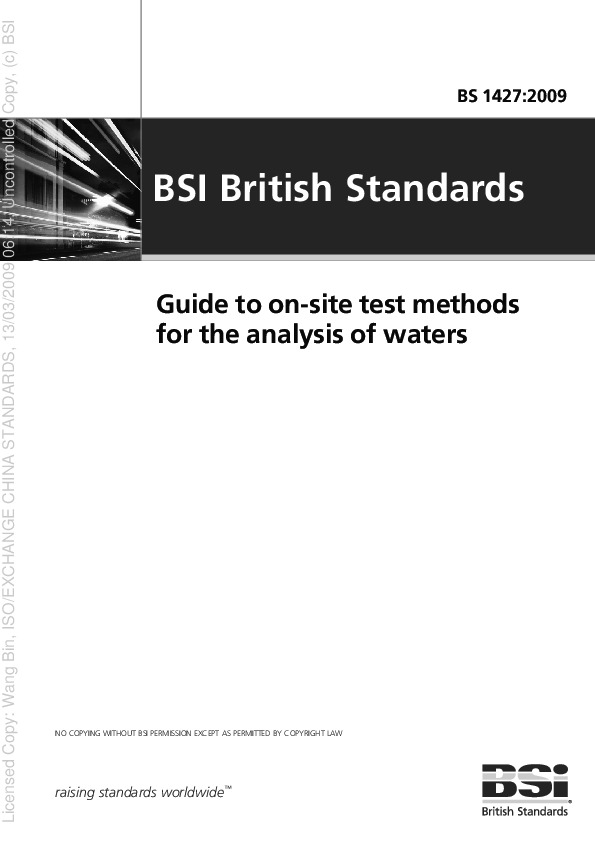BS 1427-2009
水分析用现场试验方法指南
Guide to on-site test methods for the analysis of waters
- 标准号
- BS 1427-2009
- 发布日期
- 2008年12月31日
- 实施日期
- 2009年01月01日
- 废止日期
- 无
- 中国标准分类号
- Z16
- 国际标准分类号
- 13.060.01
- 发布单位
- GB-BSI
- 引用标准
- BS 1704-1985/ISO 1770-1981 BS 2586 BS ENI SO 3696-1995
- 被代替标准
- BS 1427-1993 08/30166603 DC-2008
- 适用范围
- This British Standard describes information and guidance on test methods for the analysis of industrial and other waters which are applicable outside of a conventional laboratory as either in situ on‑site tests; or the use of a close suitable designated room/area testing facility. For some tests this could include dedicated space in a designated vehicle or caravan. These test methods can relate to compliance, water quality and process control purposes. No recommendation is given as to which test is applicable to a particular type of water, nor is it implied that in any given case all tests or any particular suite of tests are necessary. The selection of tests depends on local requirements and conditions. Samples requiring preservation for subsequent analysis are outside of the scope of this British Standard. Certain tests such as adsorbable organic halides (AOX), chemical oxygen demand (COD), total organic carbon (TOC) and total nitrogen need a suitable designated test room/area facility and are not considered suitable for testing outside of these designated areas. Sample stability is not considered to be a significant problem as most test-kit measurements are carried out with minimal delay. Most of the methods described in this standard can be applicable for use on clean or lightly polluted waters which might have undergone treatment or been modified for industrial use. Typically, the types of waters for which the tests are intended include the following: a) boiler waters; b) cooling waters; c) waters from hot water systems; d) waters from air conditioning systems; e) waters from industrial air washing systems; f) potable waters; g) ground waters; h) surface waters; i) process waters; and j) swimming pool waters. Certain more heavily polluted waters can be routinely tested for certain control purposes for specific determinands using the test methods cited in this British Standard. Such waters include: 1) sewage works influents and effluents; 2) selected industrial effluents. Emergency screening analysis for major pollution incidents is not covered (see commentary). The on‑site methods outlined in this British Standard include titrimetric, colorimetric and instrumental analytical techniques and also includes consideration of commercial test-kits: their general principles and formats available. It is generally accepted that in the UK, the vast majority of on‑site measurements are carried out using commercial test-kits rather than user-devised test-kit type methods following similar equivalent method procedures to those used in conventional laboratories. Also the designated room/area testing facility titrimetric methods described in Section 4 of this standard might require staff with a greater degree of training than commercial test-kit titrimetric methods which can be readily used outside of these areas. These methods are less likely to be used by non‑analysts than the more robust test-kit titrimetric methods. The technique used and principle of the designated room/area testing facility titrimetric method are described within each test method and each method is self‑contained within a standard format. This British Standard does not apply to radioactivity, ecotoxicity (See Persoone et al., 2000 [4]) or microbiological testing. Spot tests are not covered (Jungris, 1997 [5]). Many of the relevant methods are suitable for analysis for the water framework directive (see Note and SWIFT 2003 [6]), water for human consumption (see Note) and for monitoring of discharges to water and sewer (EA, 2006 [7] and Dixon and Gardner, 1997 [8]).
